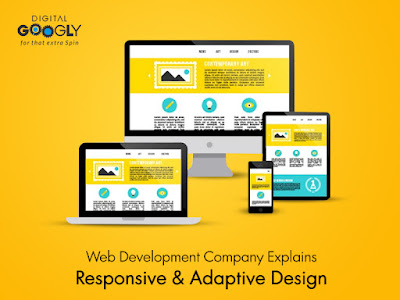Should you make your website responsive or adaptive? Which will be more effective for your business?
If you think about these questions, you've come to the right place.
In this post, a web development company in Kolkata, India, explains the difference between the two design styles and the pros and cons of each.
What is Responsive Website Design?
Responsive web design (RWD) is based on the idea that the design should "respond" to changes in the web browser, such as its width, by moving different design elements around to fit in the available space.
This differs from Standalone Design, where users with smaller screens have to zoom in and out because the site was made for a standard desktop size.
RWD became more popular around 2014 when access to the internet from phones and other small devices started to surpass access from desktops.
What is Adaptive Design?
Adaptive web design (AWD) uses different fixed layout sizes, says a web design and development company in Kolkata, India. The AWD site figures out the size of the web browser by looking at how much space it has. It then changes to fit the screen by choosing the layout that works best.
For example, when a desktop user opens an AWD page, the site figures out how much space is available and chooses the closest fixed layout.
Pros & Cons of RWD & AWD
Responsive Design – Pros
- Uniform design across all devices creates a better, constant user experience (UX) when switching between devices
- SEO friendly
- Numerous templates and styles can be used
- Easy to implement
Responsive Design – Cons
- Less control over the screen size, which means that designs are often made for mobile first and then stretched to fit desktops.
- During resizing, elements can move around without the designers' control.
- The placement of ads cannot be fixed
- Slightly slower load times on mobile devices
Adaptive Design – Pros
- The ability to design the best user experience (UX) for each specific screen size
- Enables the best placement of advertisements based on screen size
Adaptive Design – Cons
- takes more effort and time to produce
- an AWD page may not perform well on all of the different screen sizes of various digital devices
- requires more SEO work to make sure that search engines can recognize the same content across different layouts
In Conclusion
According to one of the best web development companies in Kolkata, India, it's essential to know the difference between responsive and adaptive web design before making a new site or changing the look of an old one.
Each choice has pros and cons that should be weighed against the business goals and customer user personas, including how customers interact with a website.








0 Comments